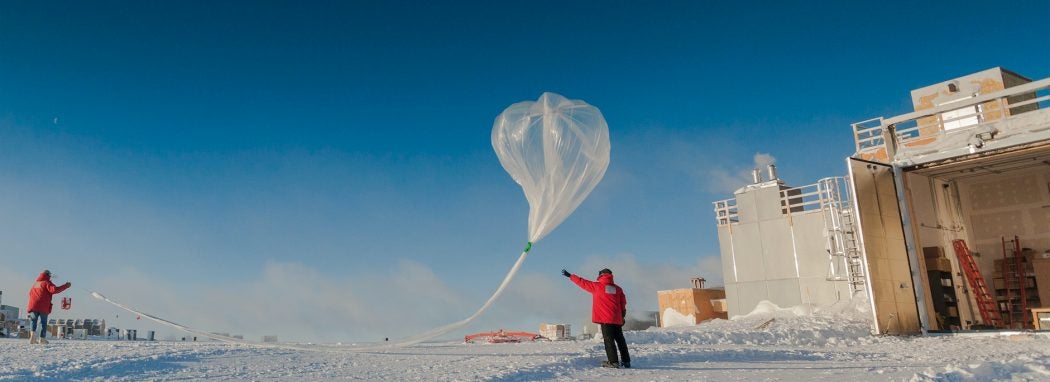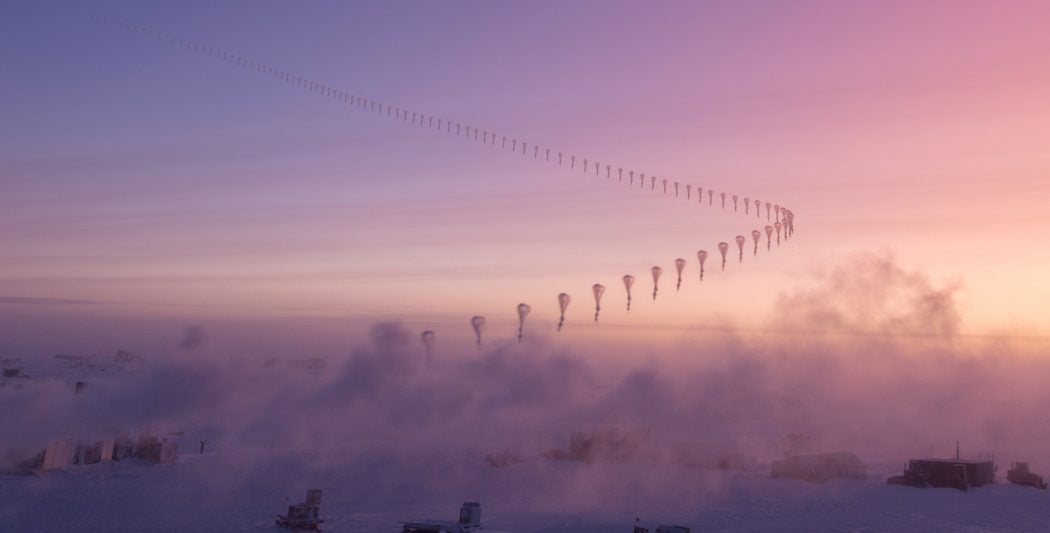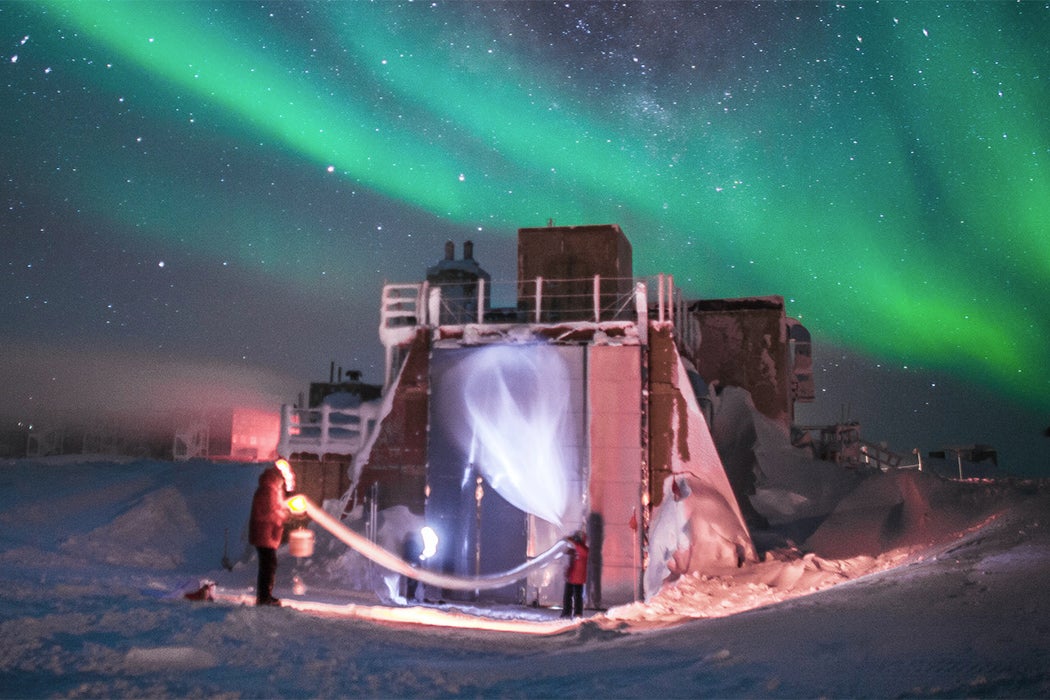In 1987, a group of international scientists penned the Montreal Protocol on Substances that Deplete the Ozone Layer, which was soon put into force by 197 nations. It banned chlorofluorocarbons (CFCs) to start, which were used in industry and also in consumer products, most notably hairspray.
Three decades later, the world tends to forget about the thinning of the stratosphere’s ozone layer and the annual ozone hole that appears over Antarctica. We’re living in an era of smaller hair, and increasingly huge and complex environmental concerns like global warming, dying coral reefs, and animal extinctions.
Besides, with the Protocol and treaty behind it, the 1985 Vienna Convention for the Protection of the Ozone Layer have done their work: the layer is on track to be repaired in fifty years or so, right? Not entirely.
“The Montreal Protocol has solved the ozone layer,” says David Fahey, director of the ESRL chemical sciences division of the National Oceanic and Atmospheric Administration (NOAA) and co-chair of the scientific assessment panel of the Montreal Protocol. “But it requires vigilance. You don’t just turn your back and walk away and hope the world does the right thing. We’re watching.”
That’s because healing of the ozone layer is merely projected, it’s not a done deal. New ozone-depleting substances keep emerging — the truly dangerous ones are under control, but we don’t yet know what havoc these up-and-coming substances might wreak. Meanwhile, the layer’s fate seems intertwined with greenhouse gases and global warming, which could lead to an unpredictable duality. It may cause the ozone layer to thin again. Or it may lead to a worrisomely thick ozone layer, reducing the amount of ultraviolet light the planet gets, which would drastically affect our lives, health, and wellbeing.
Down the Ozone Hole
Concerns about the ozone layer date back to 1974, when University of California, Irvine professors discovered that CFCs destroy ozone in the stratosphere. That triggered a few years of debate. A report from the 1976 national meeting of the American Chemical Society in San Francisco showed scientists and industry in a data face-off: chemists reported the ozone layer would decline by 13 percent by 2000, causing 80,000 more cases of skin cancer in the U.S. alone. Executives at DuPont, the biggest manufacturer of CFCs, countered that ozone levels were set to go down by just 0.05 percent.
But the science was so compelling that ozone denying didn’t have much teeth. By the late 1970s most nations had voluntarily banned CFCs in aerosols and capped industrial use. In 1985, British scientists published their discovery of the ozone hole over Antarctica and the Vienna Convention was ratified. Two years later, reduction goals for CFCs were set out in the Protocol.

However, new ozone-killing culprits quickly emerged. Manufacturers’ substitute gases, particularly hydrochlorofluorocarbons (HCFCs), while marketed to consumers as ozone-friendly according to one 1990 study, in fact were not. The Protocol soon began controlling HCFCs and then added halons, methyl bromide, carbon tetrachloride and bromochloromethan, and additional CFCs, such as CFC-113.
The next flagged offenders were hydrofluorocarbons (HFCs), a popular substitute to some of the banned substances, deemed problematic because of their greenhouse effect. HFCs warm up the stratosphere, speeding up the ozone-destroying chemical reactions, and by 2050, the amount of global warming caused by HFCs could be 20 percent of that of carbon dioxide. Luckily, HFCs could soon be under control: In 2016, in Kigali, the 197 member countries of the Protocol adopted an amendment to reduce HFCs by more than 80 percent over the next 30 years. “It was a big step, choosing to tackle HFCs,” says Steve Montzka, a research chemist with the NOAA.
All these efforts are working. Data released in 2014 showed that ozone-depleting substances had dropped by 10-15 percent from their peak values. Ozone levels were up, particularly in the upper stratosphere. “That’s where we expect to see recovery first,” says Susan Strahan, senior research scientist with Universities Space Research Association, confirming this is a good sign. If all goes as planned, the data suggests that the global mean ozone layer should reach its 1980s levels around mid-century.
Except that now there are new chemicals to watch out for.
More Chemicals in the Pipeline
As we keep adjusting the chemical substances we use, they affect the ozone layer healing in complex ways. So scientists must monitor them too.
One emerging type of chemicals to watch are compounds that contain bromine, which also destroys ozone. As the oceans warm, they’ll release more bromine-containing substances into the atmosphere by evaporation, which may impact future ozone levels. “Bromine is very effective at destroying ozone,” says Strahan. “We need to keep an eye on it.”
Another potential ozone layer menace is dichloromethane, which has increased in the atmosphere by 60 percent, thanks to its heavy use in industry in southern Asia. While it’s so short lived that it normally degrades before reaching the ozone layer, the emissions’ proximity to the equator pushes it up faster. “There’s a pathway near the equator where most chemicals get into the stratosphere,” says Strahan, so dichloromethane is another chemical to track.
Nitrous oxide (N2O) is another pesky and tricky substance to watch. A 2009 study’s title says it all: Nitrous Oxide(N2O) The Dominant Ozone-Depleting Substance Emitted in the 21st Century. Fahey confirms that’s true: since the most dangerous ozone-depleting substances have already been nabbed,(N2O) is the “last one standing,” he says. “It contributes to ozone loss, but not in a huge way.” Global warming is heating up the middle stratosphere, which slows down nitrous oxide’s ozone-destroying abilities. However, that comes with an ironic complication: if we pull back on warming the planet, (N2O) could become a bigger problem.

Many of the ozone depleting gases also contribute to global warming, which wasn’t a pressing concern in the 1980s, but certainly is now. “When they first controlled ozone-depleting gases they weren’t really thinking about climate. But these chemicals are significant greenhouse gas generators, and they make a difference,” says Montzka.
A 2007 report called The Importance of the Montreal Protocol in Protecting Climate says that the “climate protection already achieved by the Montreal Protocol alone is far larger than the reduction target of the first commitment period of the Kyoto Protocol.” A 2017 study measured the dramatic impact in the U.S.: reducing ozone-depleting substances in America between 2008 and 2014 took the equivalent of 170 million tons of C02 out of the atmosphere.
Too Much Recovery Isn’t a Good Thing
But that’s not the full story about the interaction between the ozone layer and global warming. When greenhouses gases get into the upper stratosphere, they cool it down. So as the planet and the troposphere warm, the upper stratosphere gets colder, which will slow down ozone loss. “We’re cooking down here, but in the upper stratosphere, it slows down that loss reaction,” says Strahan. However, this so-called super recovery isn’t necessarily a good thing—it could lead to an extra-thick ozone layer, limiting the amount of ultraviolet light that gets to the planet in a way that could negatively affect living things.
The size of the Antarctic ozone hole still fluctuates year-to-year and season to season. When sunlight returns at the end of winter, it triggers ozone-depleting substances in the layer to rev up ozone damage—at a rate of about one percent a day. It’s dependent partly on the weather around the poles: the 2017 hole was the smallest since 1988, peaking on September 11 at 7.6 million square miles. A warming event at that time minimized the creation of stratospheric clouds, which slowed down ozone-killing chemical reactions.
So, if you thought ozone was so very ‘80s, think again. This life-protecting layer isn’t better just yet. Luckily, the Montreal Protocol and the scientists behind it are vigilant.
“I like to think of the scientific assessment panel as a bit of a SWAT team,” says Fahey. “We’re looking for problems and proactively doing something about them.”







